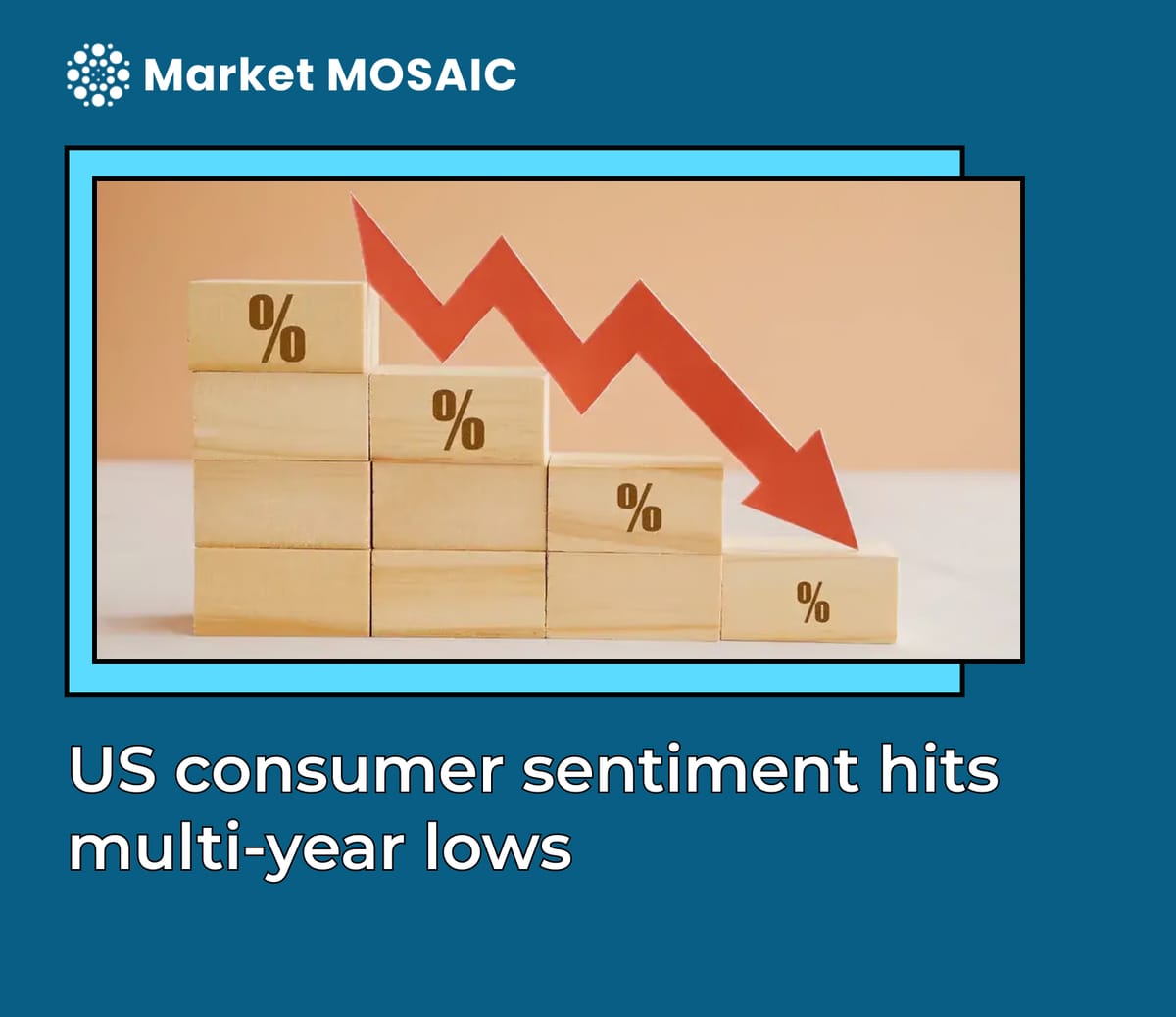US consumer sentiment hits multi-year lows

American consumer sentiment has plummeted to its lowest point in more than two years, with the University of Michigan’s Consumer Expectations Index falling to a stark 60 points. This drop of 18% from the previous point is more than just a temporary dip. It signals something deeper: a rising wave of economic anxiety that’s sweeping across households of all incomes, regions, and political leanings.
The shift beneath the surface
Consumers are increasingly doubtful not just about prices, but about the broader economic path fueled by uncertainty over policy decisions, trade tensions, and the lingering threat of interest rate hikes. According to recent insights from the University of Michigan, Americans are growing uneasy about how evolving trade dynamics and geopolitical risks could ripple through their personal finances in the months to come.
Consumer caution becomes economic signal
This decline in sentiment is not just theoretical, it’s already reshaping behavior on the ground. Households are putting off big purchases, tightening their grip on discretionary spending, and prioritizing savings. Retailers and brands across categories are observing longer decision-making cycles and more intense price sensitivity. Our data suggests that what we’re witnessing is not a panic, but a purposeful pullback. Consumers are adjusting to a reality where confidence no longer fuels demand; caution does.
This behavioral shift matters deeply because consumer spending makes up nearly 68% of the US economy. A prolonged downturn in sentiment can slow demand in sectors from travel to tech. And it’s not just low-income earners. The sentiment shift spans age, education, and political lines, making it a structural trend rather than a passing tremor.
What business leaders must take away
For business leaders and executives, this is a strategic inflection point. Growth playbooks built on aggressive expansion or premium positioning may need to be reconsidered. The consumer in mid-2025 is leaning into brands that deliver not just innovation, but value and dependability. Communication strategies that emphasize stability, affordability, and responsiveness will resonate more deeply than campaigns built on disruption or aspiration.
Now is the time to recalibrate. Flexibility in pricing through tiered offerings or incentive-driven models can help capture hesitant buyers. Operational planning must account for uneven demand and slower conversion cycles. More importantly, forecasting tools need to be updated to reflect sentiment volatility rather than backward-looking sales data.
This is also a critical moment for trust-building. Consumers are watching closely. Brands that communicate clearly about pricing, supply chain adjustments, or policy impacts will earn not just purchases, but loyalty. In uncertain times, transparency becomes a competitive edge.
There’s no denying the unease in the air. But volatility is not new, it’s cyclical. The businesses that thrive in sentiment-driven markets are often those that respond, not react. Consumer confidence remains one of the clearest early signals in the economic landscape. Its recent collapse is not just a data point, it’s a message. And those who listen carefully, adapt quickly, and communicate clearly will not only weather the storm, they’ll shape what comes after it.





